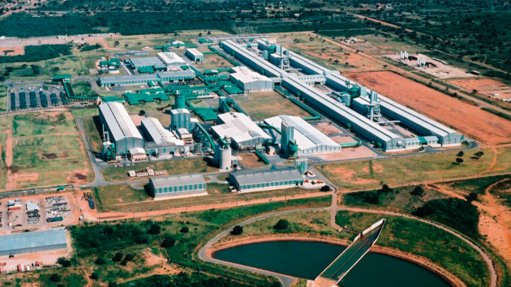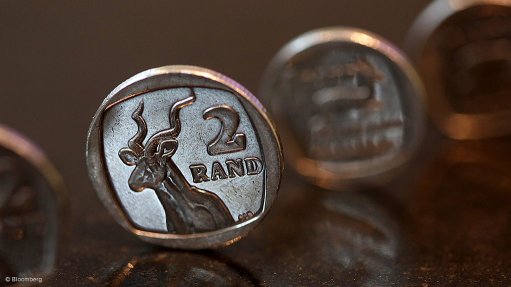Climate change: Part 4
Summary of previous columns: climate change is real, if only because, in Norway, large patches of ice have melted and given up artefacts. This shows that Norway has become warm enough to melt ice, which has not happened in recent times, and the discovery of the artefacts shows that the ice has melted before.
Secondly, 63% of 1 854 of the American Meteorological Society members questioned in a survey were convinced that climate change was real and man-made, while 38% were unconvinced. Not 97%.
Those convinced want carbon dioxide (CO2) emissions reduced. Let us see where they come from, to begin with. Tables list emissions of greenhouse gases (GHGs) – mostly CO2 – per country per capita. The figures are estimated, not measured. There are two methods of accounting: ‘production-based emissions’ and ‘consumption-based emissions’. For production-based emissions, emissions are from electricity production, road transport, domestic aviation, refrigeration and air conditioning, fertilisers and wastewater handling. Consumption-based emissions are more complex to calculate. CO2 and GHG emissions are all estimations. These estimations put the countries with the highest emissions in the following order: China; the US; the European Union (EU), including the UK; India; Russia; Japan; and Germany. China gives off 30% of world total emissions and the US about half that. Apart from this list, no other country contributes more than 2% to world total emissions.
Africa is not a significant source of GHG emissions, accounting for only 2% to 3% of the world’s CO2 emissions from energy and industrial sources. According to the World Resources Institute, Africa’s per capita emissions of CO2 in 2000 were 0.8 metric tons per person, compared with a global figure of 3.9 tons per person. For all countries, the sources of CO2 are generally industry, electricity generation, the commercial and residential sectors, agriculture and the transport sector. In the US, transport accounts for 29% of all emissions. (Wow! All those Cadillacs!)
In general, for all the top five CO2 producers, transport is at least 25% of the total. Which is strange, if you think about it, because the number of vehicles is quite different for each country (assuming the EU is one country).
Anyway, I will cut to the chase: a vast amount of transport-related CO2 emissions come from commercial air traffic. A round trip of 300 passengers between London Heathrow and New York JFK emits 194 400 kg, or 194.4 metric tons of CO2. One trip. In total, there are about 3 000 transatlantic flights daily (1 500 round trips), which give off 106-million metric tons of CO2 a year, the same as 25% of the people of South Africa. Remember, that is transatlantic flights only. For all air transport, the figure is 918-million metric tons, which is certainly more than emitted by South Africa in a year.
Now, if we get back to the point of this thing, the question was: Is climate change real and made by mankind? The Norway example illustrates that it is real. The question is whether it is made by mankind. And here, folks, is where the Cape Town city bowl comes into play. In summer, when it is still, the bowl, the area above the city centre, has a haze. It is from car exhaust fumes. The area concerned is about ten-million square metres.
If it is 10 m thick and all CO2, then it would have a mass of about 0.12-million metric tons. So, the yearly emissions of civil aviation could blanket South Africa and then some 10 m deep in emissions. And this, in Europe and Russia and the US and China, is what is happening. Not at least assisted by the 40 000-odd people who attended the Paris climate conference and flew there.
And thus I come to the end of this four-part series: Is climate change real? Yes, the Norway example. Is it man-made? Not proven, could well be. Should we shut the Eskom coal stations? No, it won’t make any difference. What will work? Limiting commercial flights, significantly. Will that happen? Uh, no, bru, not.
Article Enquiry
Email Article
Save Article
Feedback
To advertise email advertising@creamermedia.co.za or click here
Comments
Press Office
Announcements
What's On
Subscribe to improve your user experience...
Option 1 (equivalent of R125 a month):
Receive a weekly copy of Creamer Media's Engineering News & Mining Weekly magazine
(print copy for those in South Africa and e-magazine for those outside of South Africa)
Receive daily email newsletters
Access to full search results
Access archive of magazine back copies
Access to Projects in Progress
Access to ONE Research Report of your choice in PDF format
Option 2 (equivalent of R375 a month):
All benefits from Option 1
PLUS
Access to Creamer Media's Research Channel Africa for ALL Research Reports, in PDF format, on various industrial and mining sectors
including Electricity; Water; Energy Transition; Hydrogen; Roads, Rail and Ports; Coal; Gold; Platinum; Battery Metals; etc.
Already a subscriber?
Forgotten your password?
Receive weekly copy of Creamer Media's Engineering News & Mining Weekly magazine (print copy for those in South Africa and e-magazine for those outside of South Africa)
➕
Recieve daily email newsletters
➕
Access to full search results
➕
Access archive of magazine back copies
➕
Access to Projects in Progress
➕
Access to ONE Research Report of your choice in PDF format
RESEARCH CHANNEL AFRICA
R4500 (equivalent of R375 a month)
SUBSCRIBEAll benefits from Option 1
➕
Access to Creamer Media's Research Channel Africa for ALL Research Reports on various industrial and mining sectors, in PDF format, including on:
Electricity
➕
Water
➕
Energy Transition
➕
Hydrogen
➕
Roads, Rail and Ports
➕
Coal
➕
Gold
➕
Platinum
➕
Battery Metals
➕
etc.
Receive all benefits from Option 1 or Option 2 delivered to numerous people at your company
➕
Multiple User names and Passwords for simultaneous log-ins
➕
Intranet integration access to all in your organisation


















